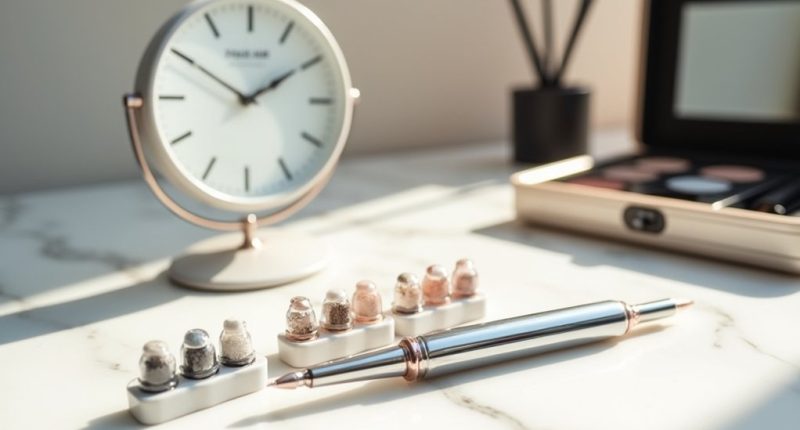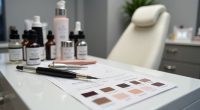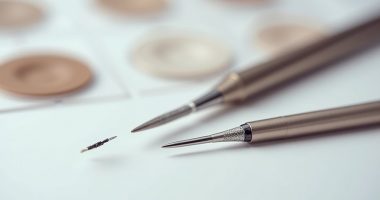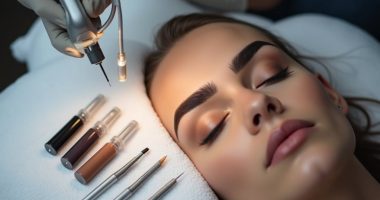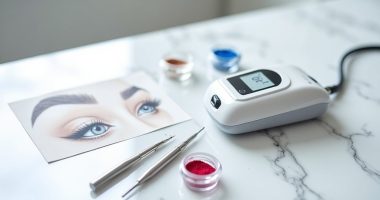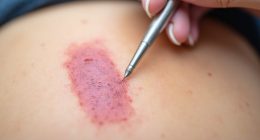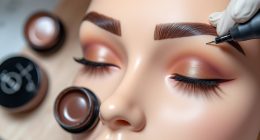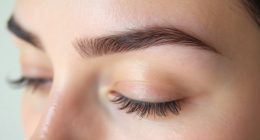Permanent makeup saves serious time—no more daily application or touch-ups after meals. It stays put during workouts and swimming, unlike regular makeup that smudges at the worst moments. For those with medical conditions like arthritis or alopecia, it offers independence and normalcy. Results last 1-3 years, making it cost-effective in the long run. Beyond convenience, it delivers consistent confidence that foundation and lipstick simply can't promise.
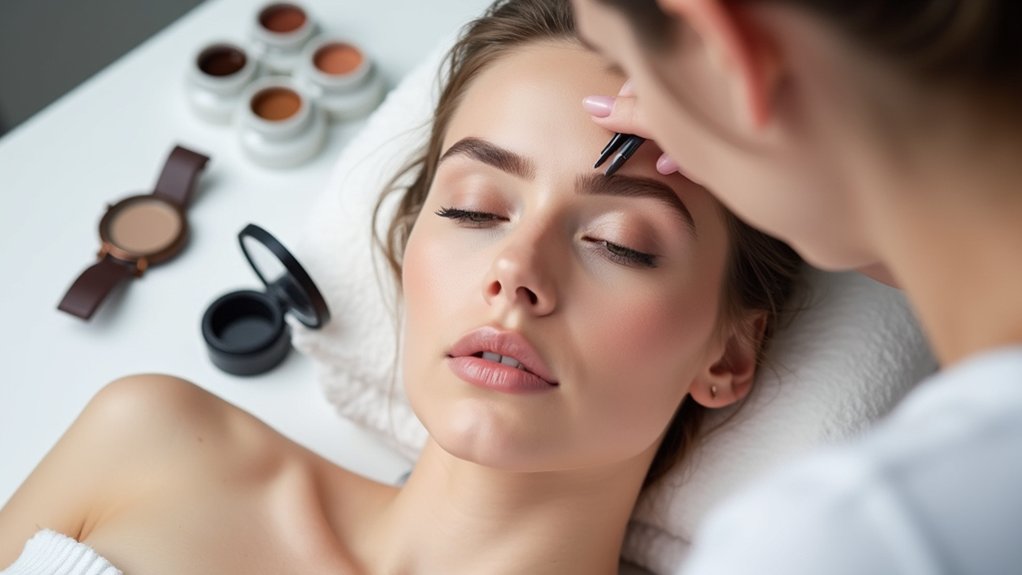
While many people spend countless minutes each morning perfecting their makeup routine, permanent makeup offers a solution that's both practical and liberating. The procedure involves tattooing pigment into the skin to create the appearance of makeup, and it's revolutionizing daily routines. These time-saving techniques can eliminate 10-60 minutes of daily makeup application—that's a lot of extra sleep.
No more rushing to apply eyeliner on a bumpy train commute. No more lipstick touch-ups after lunch. Just wake up and go. The enhancement of natural beauty happens without the cakey look of traditional cosmetics, creating subtle definition that looks, well, like you but better.
Imagine flawless beauty without the daily battle—permanent makeup enhances your natural features while you simply wake up and go.
Permanent makeup isn't just pretty—it's practical. The results typically last 1-3 years before requiring touch-ups, making it cost-effective despite the initial investment. Think about it: fewer makeup purchases, no more frantically replacing that favorite lipstick shade that got discontinued.
And consistency? Guaranteed. Your look remains flawless regardless of weather, tears, or that sweaty gym session.
Active individuals particularly benefit from this innovation. Swimmers, marathon runners, outdoor enthusiasts—their makeup stays put. Period. No smudging during that morning jog or disappearing during your beach vacation. It's there when you plunge into the pool and when you emerge. Convenience at its finest.
For those with medical conditions, permanent makeup isn't just convenient—it's life-changing. People with arthritis or Parkinson's who struggle with steady hands find independence. Those undergoing chemotherapy regain familiar features. Individuals with cosmetic allergies finally experience freedom from reactions.
It's makeup that works for everyone, not just the steady-handed and non-sensitive.
The psychological benefits can't be overstated. There's something powerful about waking up already feeling put-together. Confidence increases. Anxiety decreases. No more worrying about makeup meltdowns during important meetings or special events.
For those with skin conditions or scarring, the normalization effect provides dignity that traditional makeup often fails to deliver consistently. People with alopecia can restore their natural-looking eyebrows through microblading techniques that recreate the appearance of hair lost to the condition.
The low-maintenance nature of permanent makeup means simplified skincare routines too. No more aggressive makeup removers. No more clogged pores from daily foundation. Just clean skin with enhanced features.
Morning routine? Shortened. Evening routine? Simplified. Life? Easier. And really, isn't that what we're all after?
Breast cancer survivors can benefit tremendously from permanent makeup through areola repigmentation procedures, helping them reclaim their sense of wholeness after reconstruction surgery.
Clients often report feeling incredibly comfortable during their appointments, as professional technicians use effective numbing solutions to ensure a virtually pain-free experience.
Frequently Asked Questions
How Long Does Permanent Makeup Last Before Needing Touch-Ups?
Permanent makeup isn't actually permanent. Surprise! Most procedures last 1-3 years before fading considerably.
Longevity factors include skin type (oily skin? Fades faster), sun exposure, and even your body chemistry.
Touch-up frequency varies wildly. That first touch-up happens 4-8 weeks after initial application, then annually or every 12-18 months thereafter.
Some lucky folks stretch it to 2-3 years. When color fades or becomes patchy? Time to schedule that appointment.
Is the Permanent Makeup Application Process Painful?
Pain varies widely during permanent makeup application. Individual pain tolerance makes a huge difference—some clients snooze through it while others wince.
Good news: numbing agents markedly reduce discomfort. Technicians apply topical anesthetics before and during the procedure.
Still, expect some sensation. Eyeliner tends to be more sensitive than brows. Lips? Those can be tricky. The feeling resembles threading or plucking eyebrows.
Nothing unbearable. Just temporary discomfort for long-term beauty. Worth it? Most clients think so.
What Are Potential Side Effects or Risks?
Permanent makeup isn't all glamour. Infection risks are real—hepatitis, HIV, and staph can happen with unsterile equipment. Yikes.
Infection prevention is essential since studies found bacterial contamination in 35% of tattoo inks.
Allergic reactions? Pretty common. Think itching, swelling, and granulomas forming around pigments.
Eye procedures bring special risks—eyelash loss, ectropion, even corneal pigmentation.
Long-term, tattoos might interfere with MRIs, cause scarring, or fade unpredictably.
Nothing's perfect, right?
Can Permanent Makeup Be Removed if I Don't Like It?
Yes, permanent makeup can be removed. Not exactly simple, though.
Various removal techniques exist—laser treatment breaks down pigment particles, while saline removal uses osmosis to lift the ink.
Fading options like microdermabrasion and chemical solutions work too. Multiple sessions needed, typically 2-5 treatments spaced weeks apart.
Results vary. Can be painful, might cause scarring. Expensive too—often costs more than getting it done in the first place. Ironic, right?
How Much Does Permanent Makeup Typically Cost?
Permanent makeup isn't cheap. Period. The average procedure runs $300-$800, with eyebrows averaging $398, eyeliner $456, and lips around $303.
Price range varies wildly based on several cost factors – where you live matters (big cities = bigger bills), artist experience, and quality of materials used.
Initial costs typically include your first touch-up. Long-term maintenance runs about half the original price every few years.
Beauty has its price tag, folks.
